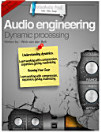The Physics of Musical Instruments
2012年12月 · Springer Science & Business Media
3.0star
1 則評論report
電子書
620
頁數
report評分和評論未經驗證 瞭解詳情
關於這本電子書
The history of musical instruments is nearly as old as the history of civilization itself, and the aesthetic principles upon which judgments of musical quality are based are intimately connected with the whole culture within which the instruments have evolved. An educated modem Western player or listener can make critical judgments about particular instruments or particular per formances but, to be valid, those judgments must be made within the appro priate cultural context. The compass of our book is much less sweeping than the first paragraph might imply, and indeed our discussion is primarily confined to Western musical instruments in current use, but even here we must take account of centuries of tradition. A musical instrument is designed and built for the playing of music of a particular type and, conversely, music is written to be performed on particular instruments. There is no such thing as an "ideal" instrument, even in concept, and indeed the unbounded possibilities of modem digital sound-synthesis really require the composer or performer to define a whole set of instruments if the result is to have any musical coherence. Thus, for example, the sound and response of a violin are judged against a mental image of a perfect violin built up from experience of violins playing music written for them over the centuries. A new instrument may be richer in sound quality and superior in responsiveness, but if it does not fit that image then it is not a better violin.
評分和評論
3.0
1 則評論
為這本電子書評分
請分享你的寶貴意見。
閱讀資訊
智能手機和平板電腦
手提電腦和電腦
你可以使用電腦的網絡瀏覽器聆聽在 Google Play 上購買的有聲書。
電子書閱讀器及其他裝置
如要在 Kobo 等電子墨水裝置上閱覽書籍,你需要下載檔案並傳輸到你的裝置。請按照說明中心的詳細指示,將檔案傳輸到支援的電子書閱讀器。






